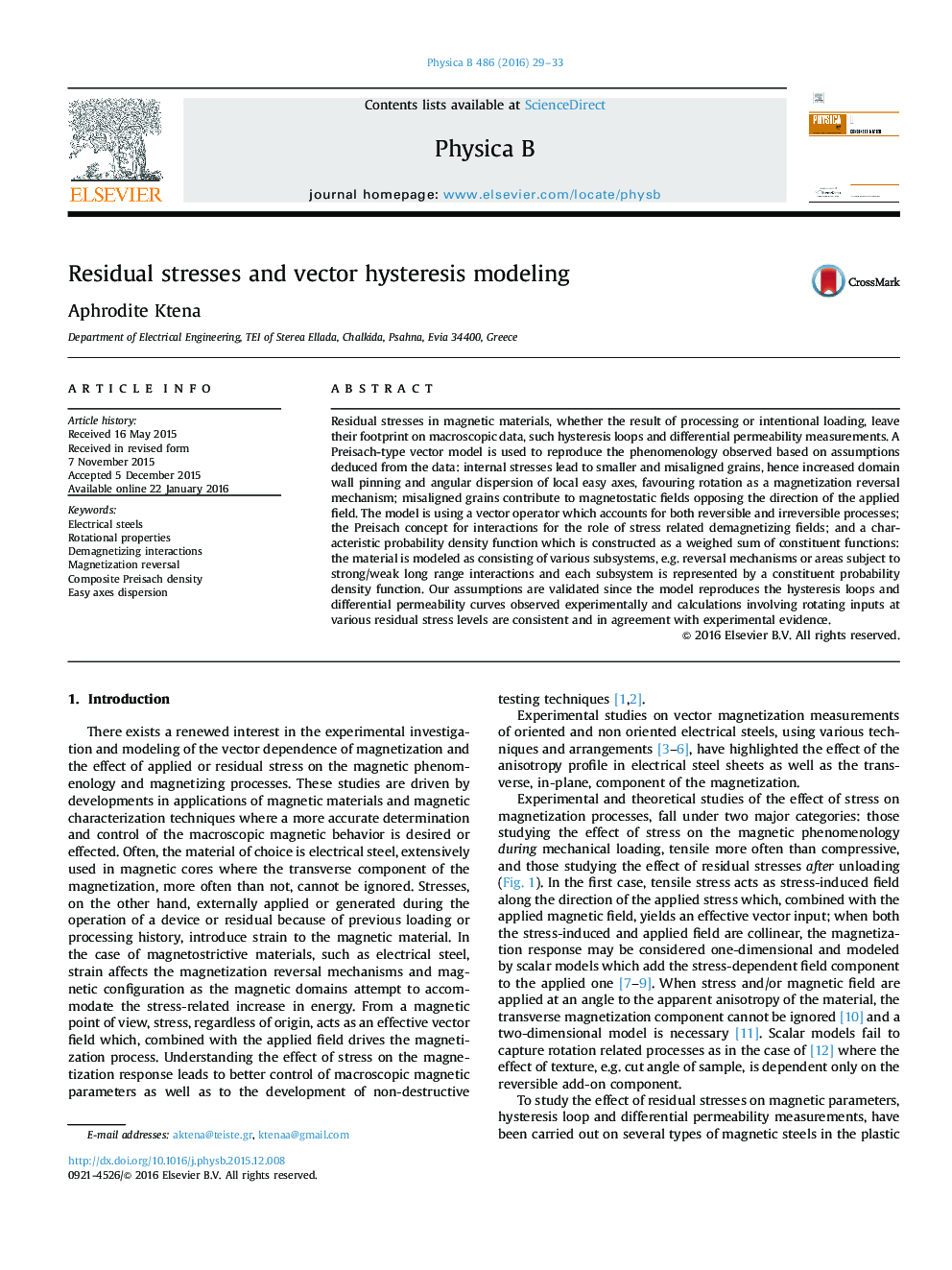| Article ID | Journal | Published Year | Pages | File Type |
|---|---|---|---|---|
| 1808584 | Physica B: Condensed Matter | 2016 | 5 Pages |
Residual stresses in magnetic materials, whether the result of processing or intentional loading, leave their footprint on macroscopic data, such hysteresis loops and differential permeability measurements. A Preisach-type vector model is used to reproduce the phenomenology observed based on assumptions deduced from the data: internal stresses lead to smaller and misaligned grains, hence increased domain wall pinning and angular dispersion of local easy axes, favouring rotation as a magnetization reversal mechanism; misaligned grains contribute to magnetostatic fields opposing the direction of the applied field. The model is using a vector operator which accounts for both reversible and irreversible processes; the Preisach concept for interactions for the role of stress related demagnetizing fields; and a characteristic probability density function which is constructed as a weighed sum of constituent functions: the material is modeled as consisting of various subsystems, e.g. reversal mechanisms or areas subject to strong/weak long range interactions and each subsystem is represented by a constituent probability density function. Our assumptions are validated since the model reproduces the hysteresis loops and differential permeability curves observed experimentally and calculations involving rotating inputs at various residual stress levels are consistent and in agreement with experimental evidence.
